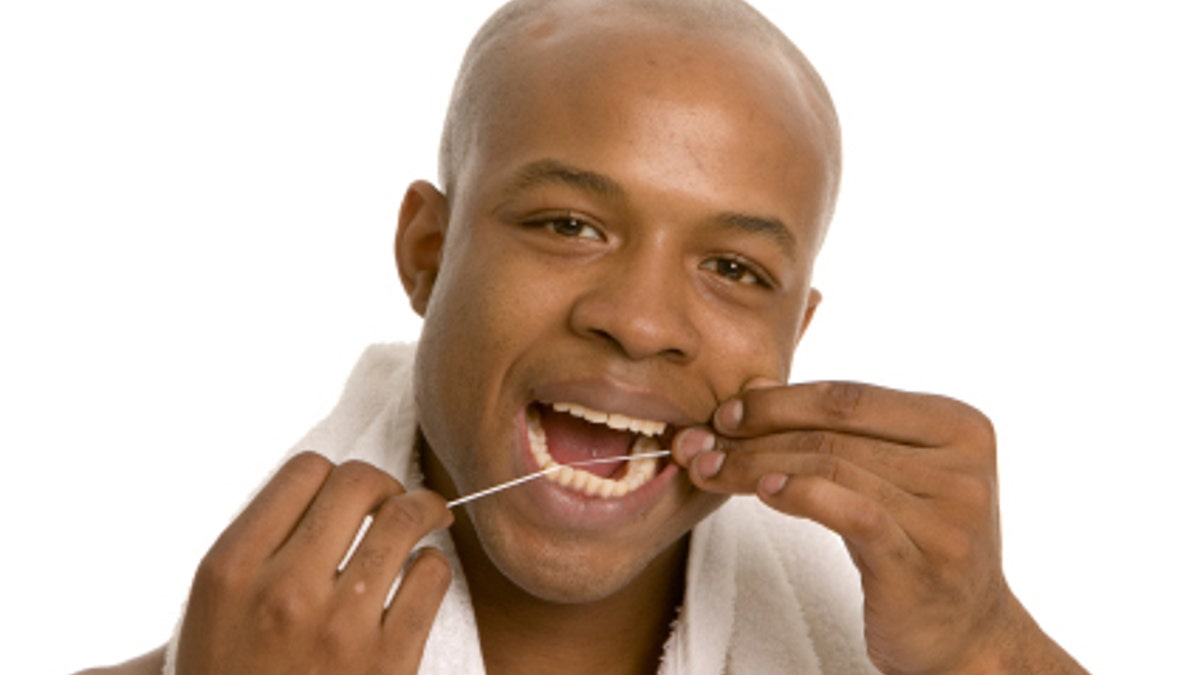
Everyone worries about bad breath from time to time especially after a spicy meal or a cup of coffee. In fact, about 9 percent of people reported having bad breath within the past 6 months, according to the Centers for Disease Control and Prevention (CDC).
For some people, bad breath is persistent and experts agree it’s likely a symptom of a more serious health problem.
What causes bad breath?
Coffee, alcohol, onions, and garlic can all cause bad breath, as can low-carb diets like Paleo and Atkins. Yet experts agree the number one reason people suffer from chronic bad breath is poor oral hygiene.
Millions of bacteria live below the gumline and on the back of the tongue. If they’re not regularly and properly cleaned, the bacteria will eat off the proteins and food particles in the mouth and release gases known as volatile sulfur compounds. The result? Cavities, periodontal (gum) disease and bad breath odor, said Dr. Steven G. Goldberg, inventor of the DentalVibe Injection Comfort System.
About 10 percent of people with bad breath also have problems— like an infection, pneumonia or bronchitis— with their nasal cavity, sinuses, throat or tonsils. Some may have gastroesophageal reflux disease (GERD), diabetes, or liver or kidney conditions. An overgrowth of yeast in the mouth, known as oral candidiasis or thrush, can also be a source of bad breath.
If you have bad breath, here are some ways to nix it.
1. See your dentist.
It’s important to find out where the odor is coming from and whether or not it’s due to a medical condition or a dental problem. Since bacteria can live in the deep pockets below the gum line, your dentist can make sure you’re brushing and flossing properly.
2. Brush.
It’s a no-brainer, but brushing after meals or at least twice a day will keep bad breath at bay. It’s also important to be methodical about brushing and make sure you’re getting all of the surfaces of your teeth and gums.
“Even if you have one tooth that you miss every time, that can cause some pretty nasty breath,” said Dr. Joseph Banker, founder of Creative Dental Care in Westfield, New Jersey.
3. Floss
An ultrasonic toothbrushes is a good choic, but the best way to get below the gum line and in-between teeth is to floss right after you brush, every time.
“If you leave food there constantly, it just sits and rots—and that smells,” Banker said.
4. Drink up.
If you’re not drinking enough water, your salivary flow decreases, which can cause breath to be more concentrated. Always carry water with you and be sure to drink throughout the day.
5. Be picky about mouthwash.
Mouthwash does a great job killing the bacteria that causes bad breath, but if it has a high alcohol content, it can be too drying and actually cause bacteria to grow, Goldberg said. Look for an alcohol-free mouthwash, and ingredients like menthol, eucalyptol or thymol instead. Also, wait 15 minutes after brushing to rinse so the mouthwash will be effective.
6. Use a tongue scraper.
Brushing your tongue only gets to the surface, but a tongue scraper used every time you brush is much more effective.
“The tongue harbors tons of bacteria and it’s a huge surface area in the mouth,” Banker said.
7. Have a glass of wine.
A recent study in the Journal of Agricultural and Food Chemistry finds that drinking red wine in moderation can inhibit the growth of bacteria. Be sure to rinse with water afterwards to prevent staining.
8. Bite into an apple.
Fiber-rich fruits and vegetables that require a lot of chewing help to clean out the teeth and the vitamin C will kill bacteria.
9. Chew gum.
Chewing sugarless gum throughout the day can help to clean out food particles in the teeth and keep the mouth moist.
10. Drink tea.
Swap out your afternoon coffee for a cup of green or black tea instead. Both contain polyphenols, which prevent the growth of bacteria.
11. Take probiotics.
A probiotic supplement may help to cut down on candida yeast that lives on the surface of the tongue, Goldberg said.
